In July 2020, French archaeologists visited the island of Cabrera, in the Spanish Balearic archipelago as part of a project related to one of the most dramatic and largely ignored episodes of the Napoleonic epic:Cabrera's captivity. A prison island where thousands of soldiers were abandoned and died in the greatest destitution.
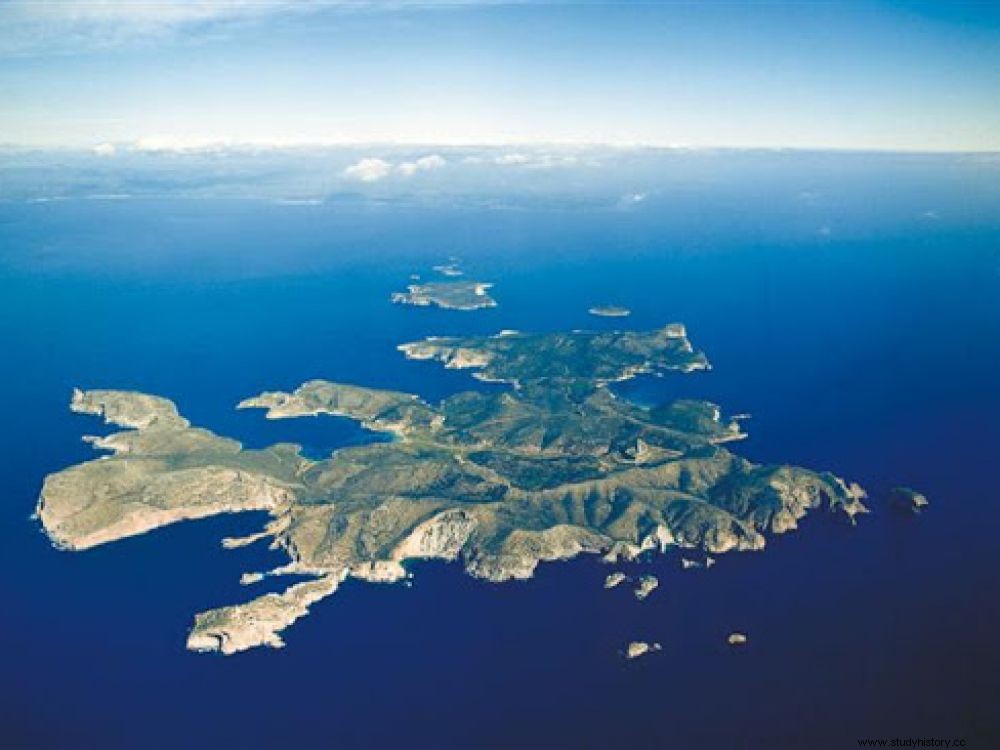
The prison island of Cabrera in the Balearic Islands, where thousands of soldiers from the Napoleonic Wars were held captive from 1809 to 1814.
A real jewel protected for its fauna and flora, the islet of Cabrera, in the Balearic archipelago, is today a land and sea national park. With its steep cliffs bathed in translucent water, and a few motionless sailboats at anchor, this sunny rock located in the south of the island of Majorca, leaves nothing to suspect of the drama of which this place was the theater between 1809 and 1814...
The prisoners perished by the thousands in Cabrera
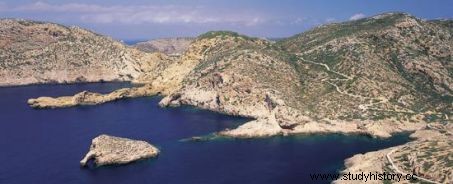
An open-air prison during the Napoleonic wars, the islet of Cabrera is now a land and sea park protected since 1991. © AFP
"On this rock, more than 11,000 Imperial soldiers, many of them prisoners of the defeat at Bailén, Spain (July 1808)* , were deported in several convoys, between May 1809 and May 1814. Dying prisoners – French, Belgian, Swiss, Polish or Italian Napoleonic soldiers – transported from the appalling 'pontoons' of Cadiz, (shipwrecks which served prisons), where they would already be dying in large numbers. Deposited in Cabrera, abandoned by all, they perished by the thousands" , declares Frédéric Lemaire, archaeologist of the National Institute for Preventive Archaeological Research (Inrap), at the head of the scientific project.
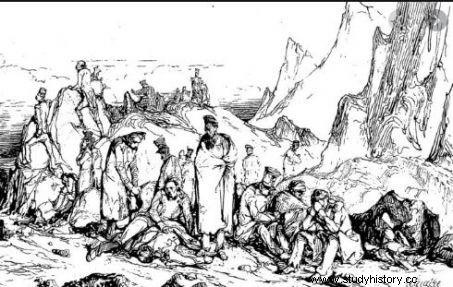
Evocation by André Lemaitre, of the fate of the soldiers prisoners in Cabrera. © André Lemaitre
"While archeology helps bring battles from the field of mythology to that of history, it also often reveals lesser-known episodes" , continues the specialist. This is the case with the sites of captivity that followed the battles, a new area of investigation in archaeology. "Cabrera is indeed ideal for developing an archaeological and anthropological research project on Napoleonic soldiers in captivity" , explains Frédéric Lemaire, referring to the desert prison island (Goat Island).

Graffiti left behind by captive soldiers in the prison island of Cabrera. © Frédéric Lemaire
Was it necessary to fight for the "defeated" of Bailén? we wondered at the time
Preserved from tourism, its soil has in fact allowed fossilization of the remains and the preservation of all traces of the former detention camp over the 15 km 2 offered by the area of the island. A real bargain for all specialists. From remains of habitats to funerary spaces, everything is still in place. "This study will better document the historical reality of the appalling living conditions these men had to face ". Detainees who, despite the oblivion of the Spanish authorities as much as the French - (was it necessary to fight for the "vanquished" of Bailén? we wondered at the time) -, had organized themselves, in order to survive, until it formed a small primitive colony. About fifteen accounts of survivors and the archives of the governor of Palma bear witness to this.
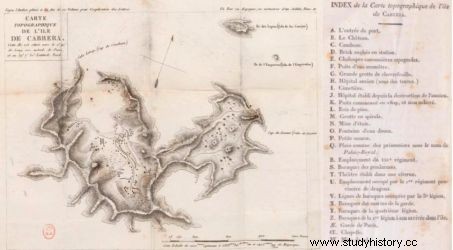
The islet of Cabrera, as depicted in the 19th century.
"Indeed, without being totally cut off from the world, the captives of Cabrera quickly understood that they were going to stay there for a long time. And to face the desperation, over the years, some tried to establish a form of company" , specifies Frédéric Lemaire. While two hundred of them had taken refuge in caves and rock shelters in the mountains - where they mostly met madness and death - others, with the few tools with whom they had landed on the island, began to build some stone dwellings. In 2003, Spanish archaeologists were also interested in a small agglomeration erected near "the port". A place that the prisoners had ironically baptized the "Royal Palace", - and that the survivors burned down in 1814, the day of their evacuation by the French Royal Navy. The islet, which has several hundred of these shelters, had, paradoxically as it may seem, a "market" and a "theater" built by the captives. Sites that Frédéric Lemaire and his team intend to find, as well as the only source of fresh water on the island. A meager net that oozed from a rock, allowing a ration of half a cup to drink per day per person.
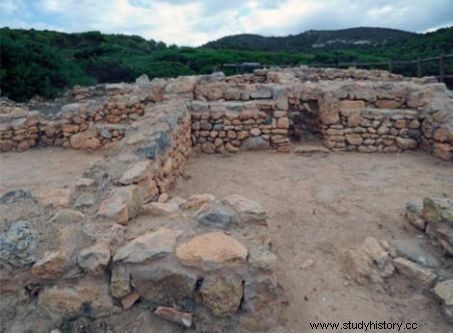
Remains of the barracks built by the captives of Cabrera. ©Frédéric Lemaire
To survive, some had also developed a small craft first on wood... then, once the rare plants present on the island were exhausted due to their overexploitation,... on human bone! Those taken from the remains of their deceased comrades, whose skeletons regularly resurfaced from the ground due to the poor burial conditions in the rock. These small sculptures favored a form of barter with the few Mallorcan fishermen who passed off the island, in exchange for food and seeds. "A makeshift city was thus built partly with materials from the ancient occupations of the island, and a form of society was recomposed in the absence of the officers evacuated to England in July 1810 ", adds the archaeologist.
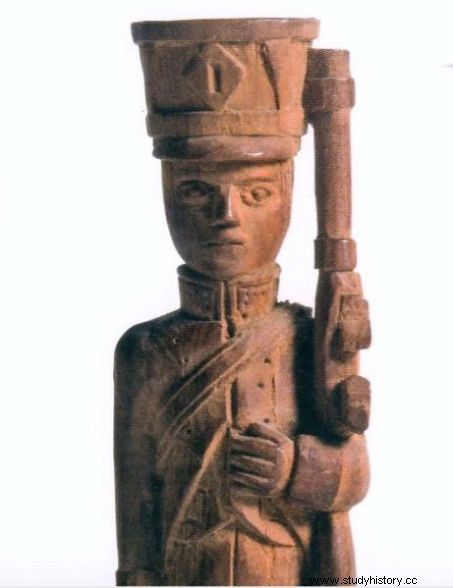
Carved out of bone, example of objects produced by the captives of the islet of Cabrera. ©Oblidats a Cabrera
After the capitulation of Bailén, the officers - as was the case in all the armies of the time - indeed enjoyed privileges inaccessible to men of the rank (those of being able to keep their personal property, accommodation, meals, etc. .). They also escaped the island detention of Cabrera by repatriation to France or captivity in semi-freedom in England.
This was not the case for the 3,500 starving, skeletal survivors, with nothing left on their backs but rags full of vermin, who landed in Marseilles in 1814, after having been picked up in two convoys by the officers and sailors who carried out their repatriation.
"Ghosts from the depths of the earth" , it will be said at the time, who also had to drink their cup to the dregs… On their return to France, these men to whom nothing had been spared were indeed to discover, floating in the wind, the hated flag of the Bourbons, at the same time as they learned of the reverses suffered by the invincible Grande Armée; his annihilation in the frozen plains of Russia in addition to the detention by the English of this emperor to whom they had given everything. With this final study that he is about to launch for three seasons (2020 -2023), Frédéric Lemaire will complete a triptych begun on camps, battlefields and captivity... after studying three major sites of the Napoleonic epic - the camp of Boulogne (Boulogne-sur-Mer); the site of the Battle of Berezina (1812), and now Cabrera.
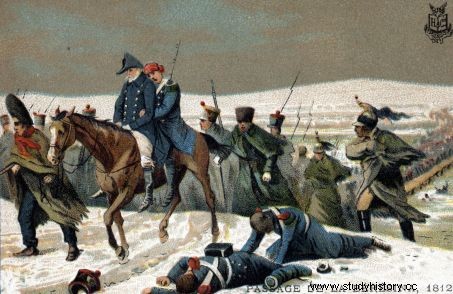
Illustration of the crossing of the Berezina (1812).
"A part of the research will also concern an environmental impact study. Because these thousands of starving men on this island have to feed themselves, exhausted all its resources, be it fish, rats, rabbits, lizards, birds, and anything edible! Hunger was so pervasive that cases of cannibalism are attested" , says the archaeologist. Cabrera, a veritable raft of the terrestrial Medusa, does not fail to recall in some of its aspects another drama, that of the survivors of the island of Tromelin, in the Indian Ocean, where Malagasy slaves were abandoned for fifteen years, in 1761, on a tiny rock surrounded by waves, following a shipwreck.
If he had not sought to recover the soldiers of Cabrera - the maritime space was at the time in the hands of the English - a strange reversal of history meant that Napoleon, after having lost his army, then his empire, was also to experience detention in a prison island… in Saint Helena.
Between 3,500 and 5,000 men died at Cabrera. Frédéric Lemaire is determined to find their trace.
*First surrender military since the beginning of the Napoleonic wars that Napoleon never forgave. "After Bailén, Napoleon enacted a law that condemned to death any officer who capitulated in open country... When the survivors of Cabrera were repatriated to France in May 1814, the Minister of War of the First Restoration government did not paid them no attention ". Woe to the vanquished!
Fatal Spanish War
"If the Russian campaign was a terrible disaster that engulfed the Grande Armée, Napoleon recognized, exiled in Saint Helena, that the "business" of Spain had been fatal to the destiny of his Empire. Wanting to cut off the peninsula, to enforce the decree of Berlin (the blockade) or by dynastic ambition, he sets up against him an entire nation which, without defeating him, will slowly devour his forces. In Spain, France was bled to death. The war in Spain was a "dirty" war, a war without glory. Napoleon lost the prestige devoted to Tilsit in July 1807 writes Frédéric Lemaire.
